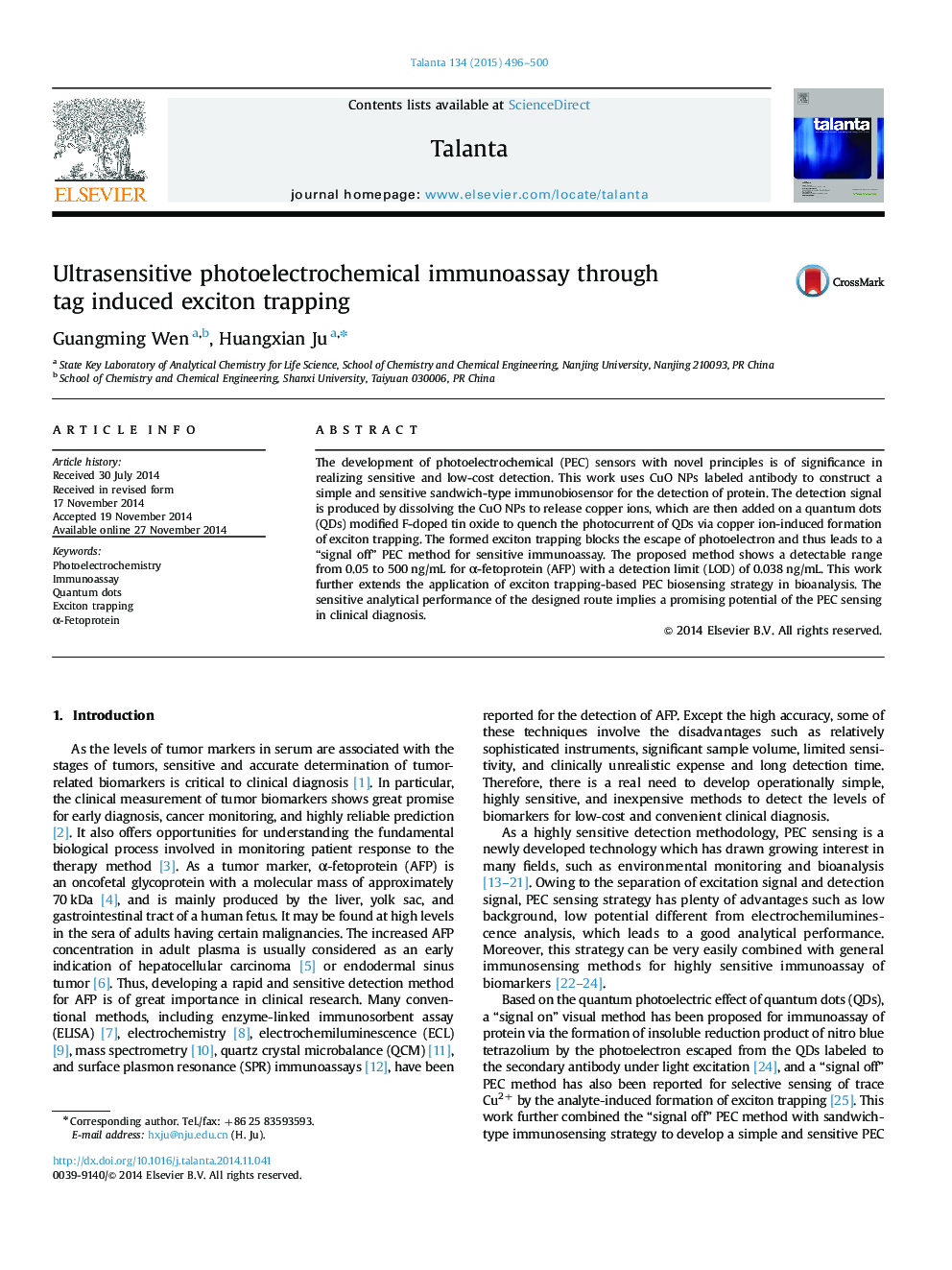| کد مقاله | کد نشریه | سال انتشار | مقاله انگلیسی | نسخه تمام متن |
|---|---|---|---|---|
| 1244110 | 1495801 | 2015 | 5 صفحه PDF | دانلود رایگان |
• A simple and sensitive photoelectrochemical immunoassay method is designed for protein detection.
• The detection relies on copper ion-induced formation of exciton trapping.
• CuO NPs are used to label the secondary antibody.
• The immunoassay method shows wide detectable range, low detection limit and high specificity.
The development of photoelectrochemical (PEC) sensors with novel principles is of significance in realizing sensitive and low-cost detection. This work uses CuO NPs labeled antibody to construct a simple and sensitive sandwich-type immunobiosensor for the detection of protein. The detection signal is produced by dissolving the CuO NPs to release copper ions, which are then added on a quantum dots (QDs) modified F-doped tin oxide to quench the photocurrent of QDs via copper ion-induced formation of exciton trapping. The formed exciton trapping blocks the escape of photoelectron and thus leads to a “signal off” PEC method for sensitive immunoassay. The proposed method shows a detectable range from 0.05 to 500 ng/mL for α-fetoprotein (AFP) with a detection limit (LOD) of 0.038 ng/mL. This work further extends the application of exciton trapping-based PEC biosensing strategy in bioanalysis. The sensitive analytical performance of the designed route implies a promising potential of the PEC sensing in clinical diagnosis.
A simple and sensitive PEC immunoassay method with CuO NPs labeled antibody was proposed for detection of protein.Figure optionsDownload as PowerPoint slide
Journal: Talanta - Volume 134, 1 March 2015, Pages 496–500
